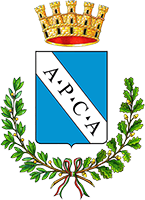
The Venturelli family is well known in Amelia since 1300. An ancestor, Petrucciolo seems to have been elected to the Board of the Elderly. Giovanni was also of note as he performed several duties. He was Governor of Bologna under Pius II later Bishop and Governor of Cesena and then the whole of Romagna under Sixtus IV. The grandson Filippo was Bishop of Amelia and municipal speaker under Pope Eugene IV at the Council of Florence in 1426. The palace falls within the type of construction that, beginning from a chosen location within the walls, bears witness to the layers of a city where the reuse of the old is quite obvious. As with most of the aristocratic palaces of the town, the building was built using pre-existing Roman structures and the surroundings as a supporting base. The building is located near Porta del Sole (still visible), the ancient entrance towards the east of the town, where it joins a paved road in an orthogonal direction with the cardo (main road towards north), the urban continuation of the Via Amerina.
The main entrance of the building is on the west side, along via Pomponia. The main floor can be reached through three flights of stairs. The living room, rectangular in shape, is located above the main entrance with two entrance doors, three windows on the long sides of the hallway and a door on each of the short sides. The pavement in cotto, dating back to the period of the building foundation in the second half of the 16th century, hosts the emblem of the family. The pictorial decoration in continuous frieze is noteworthy too. It exhibits, in the sequence of pictures in “fake frames” marked by telamons, the narration of facts and fantastic representations of symbols and allegories where the town of Amelia and its surroundings are represented. This decoration has been recently attributed to a prolific painter born in Amelia, Tarquinio Racani (active 1595-1620), whose several works of art had been previously assigned in a vague manner to the workshop of Livio Agresti, and subsequently attributed, in particular, to another of Agresti’s pupils, Liotardo Piccioli (documented from 1572 to 1578), perhaps a less well-known painter than Racani but significant enough to prove the importance of the Mannerism Age in Amelia’s history. The paintings displayed on the wall are also remarkable, showing classical landscapes that place together buildings, archaeological ruins and other natural elements in fictional and often fantastical combinations, as defined by the “caprice” genre, which was very successful in Italy around the mid-18th century.
The building lies on a roman domus articulated on multiple levels. Built in the first century B.C., it was enriched by black and white mosaic floors in the first century A.D., which are still visible by going to a cellar communicating with the underground warehouses behind the palace (street numbers 57-59 via Civitavecchia). Inside one of the two areas, which was perhaps the lobby of the house, in an off-center position, and embedded in the mosaic, a travertine base with molded cornice lies, where the mouth of a well or a cistern opens. The second area presents a mosaic with decoration in black meander on a white background, which incorporates floral motifs. Palazzo Venturelli’s mosaics show the high quality of the Roman Ameria’s private constructions, which reflected the aspirations of an emerging social class. Other residential areas of the city center have these same characteristics, such as the Roman Domus of Palazzo Farrattini.


